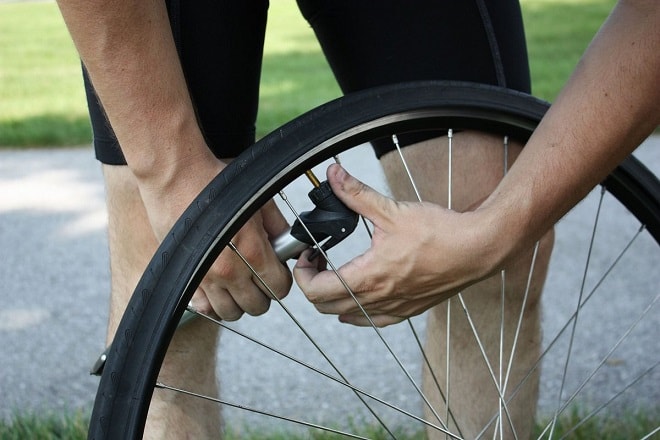Maintaining the proper air pressure in your tires is important because it allows you to experience a smooth ride and helps you to ward off things like pinch flats and punctures.
Ideally, you should check your tire pressure every time you plan to go for a ride. Modifying the pressure to match the type of terrain you’re planning to encounter is a good way to get the most out of your bike ride.
Proper tire pressure lets your bike roll quickly, ride smoothly, and fend off flats. Narrow tires need more air pressure than wide ones: Road tires typically require 80 to 130 psi (pounds per square inch); mountain tires, 30 to 50 psi; and hybrid tires, 50 to 70 psi.
To find your ideal pressure, start in the middle of these ranges, then factor in your body weight. The more you weigh, the higher your tire pressure needs to be. For example, if a 165-pound rider uses 100 psi on his road bike, a 200-pound rider should run closer to 120 psi, and a 130-pound rider could get away with 80 psi. Never go above or below the manufacturer’s recommended tire pressures.
Traditional wisdom says that higher tire pressure equals lower rolling resistance, because on a smooth surface, hard tires flex less and create a smaller contact patch. But no road is perfectly smooth. Properly inflated bike tires conform to bumps and absorb shocks. Overinflated bike tires transmit impacts to the rider, which sacrifices speed and riding comfort.
On new pavement, your tires might feel great at 100 psi, but on a rough road, they might roll faster at 90 psi. In wet conditions, you may want to run 10 psi less than usual for improved traction. And if you’re a mountain biker who rides to the trailhead, keep in mind that while your bike rolls smoothly on the road with 50 psi, it might feel better on the singletrack at 38 psi.














